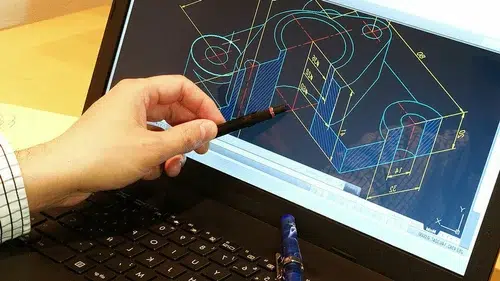Introduction to MEP Drafting Services
In the realm of construction and building design, MEP (Mechanical, Electrical, Plumbing) systems play a pivotal role in ensuring functionality, comfort, and sustainability. Among these systems, HVAC (Heating, Ventilation, and Air Conditioning) holds particular significance, as it directly impacts indoor air quality and energy efficiency. MEP Drafting Services encompass the creation of detailed technical drawings and plans for these systems, facilitating their seamless integration into building designs.

Importance of HVAC Design Efficiency
1. Energy Conservation and Sustainability
Efficient HVAC design minimizes energy consumption, reducing operational costs and environmental impact. By optimizing system performance, MEP drafting services contribute to sustainable building practices and regulatory compliance.
2. Indoor Air Quality and Comfort
Well-designed HVAC systems maintain optimal indoor air quality and thermal comfort, enhancing occupant satisfaction and productivity. MEP drafting ensures precise equipment sizing, ductwork layout, and air distribution, mitigating issues such as uneven temperature distribution and air stagnation.
Role of MEP Drafting Services in HVAC Design Efficiency
1. Precision in System Sizing and Layout
Accurate sizing and layout of HVAC components are fundamental to system efficiency. MEP drafting services utilize advanced software and expertise to determine the appropriate capacity of heating and cooling equipment, select efficient system configurations, and optimize space utilization within building constraints.

2. Integration with Building Information Modeling (BIM)
BIM technology enhances coordination and collaboration among various stakeholders involved in building design and construction. MEP drafting services leverage BIM platforms to create detailed 3D models, enabling interdisciplinary coordination, clash detection, and performance analysis for HVAC systems.
3. Compliance with Industry Standards and Codes
Adherence to building codes and industry standards is paramount for ensuring safety, reliability, and regulatory compliance. MEP drafting professionals possess in-depth knowledge of relevant codes and standards, ensuring that HVAC designs meet statutory requirements while optimizing energy performance and operational efficiency.

Advantages of Outsourcing MEP Drafting Services
1. Expertise and Specialization
Outsourcing MEP drafting tasks to experienced service providers grants access to specialized skills and industry knowledge. Dedicated drafting teams proficient in HVAC design principles and software applications deliver high-quality drawings and documentation, minimizing errors and streamlining project workflows.
2. Cost Efficiency and Resource Optimization
Engaging external MEP drafting services offers cost advantages by eliminating the need for in-house staffing, training, and infrastructure investment. Flexible outsourcing models allow organizations to scale resources according to project requirements, optimizing operational efficiency and project delivery timelines.
3. Focus on Core Competencies
By delegating non-core tasks like MEP drafting, firms can focus on their core competencies and strategic objectives. Outsourcing liberates internal resources, allowing teams to concentrate on design innovation, client engagement, and project management, thereby enhancing overall business productivity and competitiveness.

Conclusion: Driving HVAC Design Efficiency through MEP Drafting Services
Efficient HVAC design is essential for achieving optimal building performance, occupant comfort, and environmental sustainability. It play a pivotal role in maximizing HVAC design efficiency by ensuring precise system sizing, layout optimization, compliance with standards, and seamless integration with BIM workflows. Outsourcing MEP drafting tasks offers numerous benefits, including access to specialized expertise, cost efficiency, and enhanced focus on core competencies. By harnessing the capabilities of it, stakeholders can elevate the quality and sustainability of HVAC systems in building projects, contributing to a greener and more resilient built environment.
